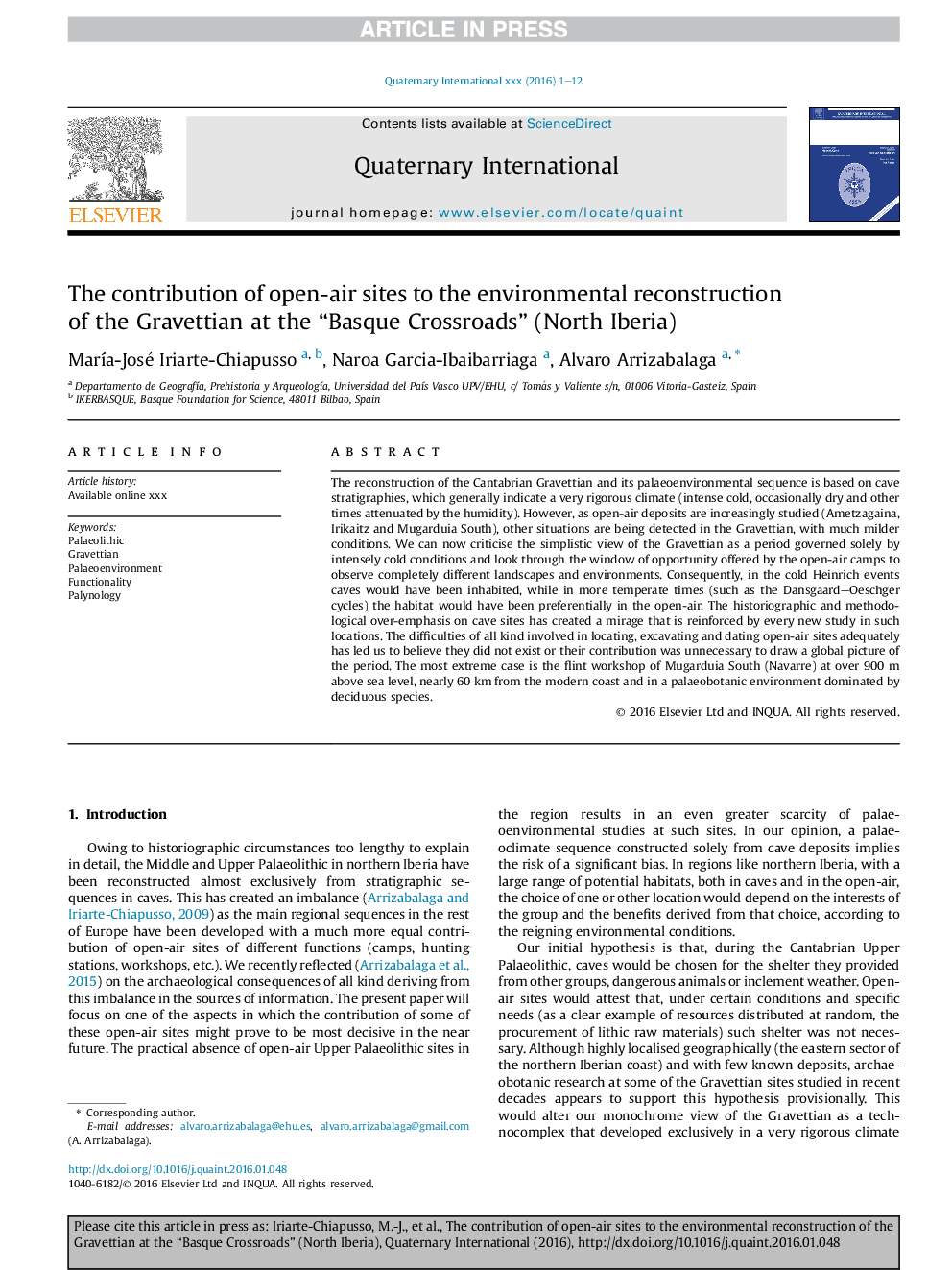| Article ID | Journal | Published Year | Pages | File Type |
|---|---|---|---|---|
| 5113716 | Quaternary International | 2016 | 12 Pages |
Abstract
The reconstruction of the Cantabrian Gravettian and its palaeoenvironmental sequence is based on cave stratigraphies, which generally indicate a very rigorous climate (intense cold, occasionally dry and other times attenuated by the humidity). However, as open-air deposits are increasingly studied (Ametzagaina, Irikaitz and Mugarduia South), other situations are being detected in the Gravettian, with much milder conditions. We can now criticise the simplistic view of the Gravettian as a period governed solely by intensely cold conditions and look through the window of opportunity offered by the open-air camps to observe completely different landscapes and environments. Consequently, in the cold Heinrich events caves would have been inhabited, while in more temperate times (such as the Dansgaard-Oeschger cycles) the habitat would have been preferentially in the open-air. The historiographic and methodological over-emphasis on cave sites has created a mirage that is reinforced by every new study in such locations. The difficulties of all kind involved in locating, excavating and dating open-air sites adequately has led us to believe they did not exist or their contribution was unnecessary to draw a global picture of the period. The most extreme case is the flint workshop of Mugarduia South (Navarre) at over 900Â m above sea level, nearly 60Â km from the modern coast and in a palaeobotanic environment dominated by deciduous species.
Related Topics
Physical Sciences and Engineering
Earth and Planetary Sciences
Geology
Authors
MarÃa-José Iriarte-Chiapusso, Naroa Garcia-Ibaibarriaga, Alvaro Arrizabalaga,
